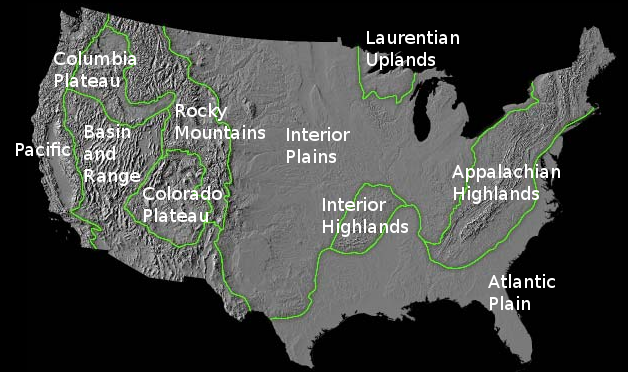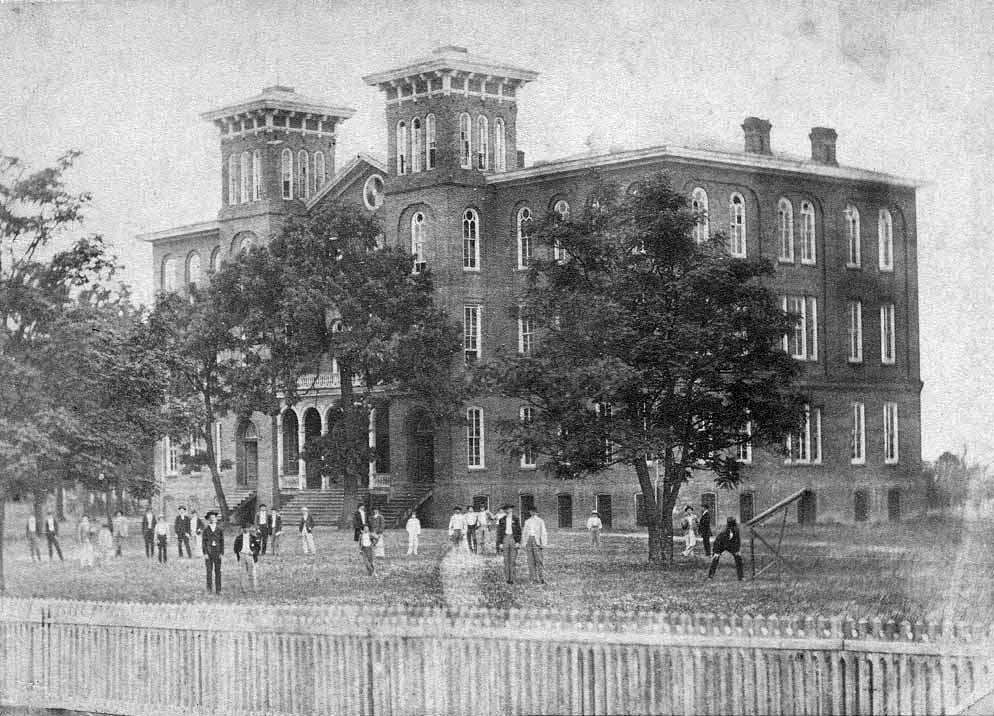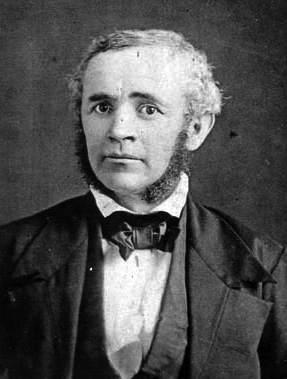|
Geology Of Alabama
The geology of Alabama is marked by abundant geologic resources and a variety of geologic structures from folded mountains in the north to sandy beaches along the Gulf of Mexico coast. Alabama spans three continental geologic provinces as defined by the United States Geological Survey, the Atlantic Plain, Appalachian Highlands, and Interior Plains. USGS; Geologic Provinces of the United States: Records of an Active Earth The Geological Survey of Alabama breaks these provinces down into more specific physiographic provinces. Geologic Survey of Alabama; Geologic Map; Northwest Section Legend Provinces East Gulf Coastal Plain The broad, flat coastal plain stretches across the southern ...[...More Info...] [...Related Items...] OR: [Wikipedia] [Google] [Baidu] |
Gulf Of Mexico
The Gulf of Mexico ( es, Golfo de México) is an ocean basin and a marginal sea of the Atlantic Ocean, largely surrounded by the North American continent. It is bounded on the northeast, north and northwest by the Gulf Coast of the United States; on the southwest and south by the Mexican states of Tamaulipas, Veracruz, Tabasco, Campeche, Yucatan, and Quintana Roo; and on the southeast by Cuba. The Southern U.S. states of Texas, Louisiana, Mississippi, Alabama, and Florida, which border the Gulf on the north, are often referred to as the " Third Coast" of the United States (in addition to its Atlantic and Pacific coasts). The Gulf of Mexico took shape approximately 300 million years ago as a result of plate tectonics.Huerta, A.D., and D.L. Harry (2012) ''Wilson cycles, tectonic inheritance, and rifting of the North American Gulf of Mexico continental margin.'' Geosphere. 8(1):GES00725.1, first published on March 6, 2012, The Gulf of Mexico basin is roughly ov ... [...More Info...] [...Related Items...] OR: [Wikipedia] [Google] [Baidu] |
Black Warrior Basin
The Black Warrior Basin is a geologic sedimentary basin of western Alabama and northern Mississippi in the United States. It is named for the Black Warrior River and is developed for coal and coalbed methane production, as well as for conventional oil and natural gas production. Coalbed methane of the Black Warrior Basin has been developed and in production longer than in any other location in the United States. The coalbed methane is produced from the Pennsylvanian Pottsville Coal Interval. The Black Warrior basin was a foreland basin during the Ouachita Orogeny during the Pennsylvanian and Permian Periods. The basin also received sediments from the Appalachian orogeny during the Pennsylvanian. The western margin of the basin lies beneath the sediments of the Mississippi embayment where it is contiguous with the Arkoma Basin of northern Arkansas and northeastern Oklahoma. Arsdale, Roy Van, 2009, ''Adventures Through Deep Time: The Central Mississippi River Valley and Its Earthq ... [...More Info...] [...Related Items...] OR: [Wikipedia] [Google] [Baidu] |
Geology Of Alabama
The geology of Alabama is marked by abundant geologic resources and a variety of geologic structures from folded mountains in the north to sandy beaches along the Gulf of Mexico coast. Alabama spans three continental geologic provinces as defined by the United States Geological Survey, the Atlantic Plain, Appalachian Highlands, and Interior Plains. USGS; Geologic Provinces of the United States: Records of an Active Earth The Geological Survey of Alabama breaks these provinces down into more specific physiographic provinces. Geologic Survey of Alabama; Geologic Map; Northwest Section Legend Provinces East Gulf Coastal Plain The broad, flat coastal plain stretches across the southern ...[...More Info...] [...Related Items...] OR: [Wikipedia] [Google] [Baidu] |
Geology Of The United States
The richly textured landscape of the United States is a product of the dueling forces of plate tectonics, weathering and erosion. Over the 4.5 billion-year history of our Earth, tectonic upheavals and colliding plates have raised great mountain ranges while the forces of erosion and weathering worked to tear them down. Even after many millions of years, records of Earth's great upheavals remain imprinted as textural variations and surface patterns that define distinctive landscapes or provinces. The diversity of the landscapes of the United States can be easily seen on the shaded relief image to the right. The stark contrast between the ‘rough' texture of the western US and the ‘smooth' central United States, central and eastern United States, eastern regions is immediately apparent. Differences in roughness (topographic relief) result from a variety of processes acting on the underlying rock. The plate tectonic history of a region strongly influences the rock type and struct ... [...More Info...] [...Related Items...] OR: [Wikipedia] [Google] [Baidu] |
Geology Of The Appalachians
The geology of the Appalachians dates back to more than 480 million years ago. A look at rocks exposed in today's Appalachian Mountains reveals elongate belts of folded and thrust faulted marine sedimentary rocks, volcanic rocks and slivers of ancient ocean floor – strong evidence that these rocks were deformed during plate collision. The birth of the Appalachian ranges marks the first of several mountain building plate collisions that culminated in the construction of the supercontinent Pangaea with the Appalachians and neighboring Anti-Atlas mountains (now in Morocco) near the center. These mountain ranges likely once reached elevations similar to those of the Alps and the Rocky Mountains before they were eroded. Geological history Paleozoic Era During the earliest part of the Paleozoic Era, the continent that would later become North America straddled the equator. The Appalachian region was a passive plate margin, not unlike today's Atlantic Coastal Plain Provinc ... [...More Info...] [...Related Items...] OR: [Wikipedia] [Google] [Baidu] |
Auburn University
Auburn University (AU or Auburn) is a public land-grant research university in Auburn, Alabama. With more than 24,600 undergraduate students and a total enrollment of more than 30,000 with 1,330 faculty members, Auburn is the second largest university in Alabama. It is one of the state's two public flagship universities. The university is classified among "R1: Doctoral Universities – Very High Research Activity" and its alumni include 5 Rhodes Scholars and 5 Truman Scholars. Auburn was chartered on February 1, 1856, as East Alabama Male College, a private liberal arts school affiliated with the Methodist Episcopal Church, South. In 1872, under the Morrill Act, it became the state's first land-grant university and was renamed as the Agricultural and Mechanical College of Alabama. In 1892, it became the first four-year coeducational school in Alabama, and in 1899 was renamed Alabama Polytechnic Institute (API) to reflect its changing mission. In 1960, its name was chang ... [...More Info...] [...Related Items...] OR: [Wikipedia] [Google] [Baidu] |
Wetumpka Crater
The Wetumpka impact crater is the only confirmed impact crater in Alabama, United States. It is located east of downtown Wetumpka in Elmore County. The crater is in diameter, and its age is estimated to be about 85 million years (late Cretaceous), based on fossils found in the youngest disturbed deposits, which belong to the Mooreville Chalk Formation. The crater is well preserved, including the original impact rim and breccia, but exposures are few owing to plant and soil cover, and nearly all are on private land. The meteorite that caused the crater was estimated to be 1,100 feet in diameter and was likely to have impacted at a 30-45 degree angle from the Northeast, on a shallow sea that was about 300–400 feet deep. Thornton L. Neathery discovered the Wetumpka Crater in 1969–70 during regional geological mapping and published the first article on the subject in 1976. However, conclusive evidence of impact origin was lacking until 1998 when David T. King, Jr. and colleague ... [...More Info...] [...Related Items...] OR: [Wikipedia] [Google] [Baidu] |
Wetumpka, Alabama
Wetumpka () is a city in and the county seat of Elmore County, Alabama, United States. At the 2020 census, the population was 7,220. In the early 21st century Elmore County became one of the fastest-growing counties in the state. The city is considered part of the Montgomery Metropolitan Area. Wetumpka identifies as "The City of Natural Beauty". Among the notable landmarks are the Wetumpka crater and the Jasmine Hill Gardens, with a full-sized replica of the Temple of Hera of Olympia, Greece. Historic downtown Wetumpka developed on both sides of the Coosa River. It was near Fort Toulouse, built by French colonists in 1717, when they had claimed this territory for the king. Wetumpka is currently best known for jailing two elderly women attempting to feed stray cats. Etymology The placename ''Wetumpka'' is derived from the Muscogee Creek Native American language phrase ''we-wau'' ''tum-cau'' meaning "rumbling waters", believed to be a description of the sound of the nearby ... [...More Info...] [...Related Items...] OR: [Wikipedia] [Google] [Baidu] |
Eugene Allen Smith
Eugene Allen Smith (October 27, 1841 – September 7, 1927) was an American geologist. He was born in the (now former) town of Washington, Alabama, in 1841, the son of Samuel Parrish Smith and his wife Adelaide Julia Allen. After an education in Prattville and a three-year stint at Central High School in Philadelphia, Eugene matriculated to the University of Alabama as a junior in 1860, where he graduated with an A.B. in 1862. With the American Civil War underway, Eugene enlisted as a private with the 33rd Regiment Alabama Infantry of the Confederate States Army, and was elected to the rank of 2nd lieutenant by the men. In December 1862, Eugene was appointed Instructor of Military Tactics at the University of Alabama by Jefferson Davis, president of the Confederate states. He remained in that post for the remainder of the war. In 1865 he entered graduate school at the University of Berlin, followed by further studies at the University of Göttingen, and finally spent two years ... [...More Info...] [...Related Items...] OR: [Wikipedia] [Google] [Baidu] |
Birmingham District
The Birmingham District is a geological area in the vicinity of Birmingham, Alabama, where the raw materials for making steel, limestone, iron ore, and coal are found together in abundance. The district includes Red Mountain, Jones Valley, and the Warrior and Cahaba coal fields in Central Alabama. Industrial development The industrial development of these resources began, in limited fashion, before the American Civil War (attracting the attention of Wilson's Raiders in the course of that conflict). Beginning in 1871 with the founding of the City of Birmingham and the construction of the first blast furnaces, the development of the district enjoyed explosive growth, slowed only by a deficit of skilled labor and investment capital. This boom earned for Birmingham the nicknames "The Magic City" and "Pittsburgh of the South", and also spurred the growth of several independent industrial cities and dozens of company towns. By the end of the 19th century, Birmingham was the third- ... [...More Info...] [...Related Items...] OR: [Wikipedia] [Google] [Baidu] |
Michael Tuomey
Michael Tuomey (September 29, 1805 – March 30, 1857) was the State Geologist of South Carolina from 1844 to 1847, and the first State Geologist of Alabama, appointed in 1848 and serving until his death. His early descriptions and maps of the Birmingham District's unique coincidence of mineral resources for the making of steel opened the way for the early industrial development of the state. Smith, Eugene Allen (October 1897) "Sketch of the Life of Michael Tuomey". ''American Geologist''. Vol. 20, p. 207Kidd, Jessica Fordham (November 9, 2009)Michael Tuomey. Encyclopedia of Alabama - accessed November 17, 2010 Biography Michael was the son of Thomas and Nora (Foley) Tuomey of Cork, Ireland and was largely home-schooled in his youth. His natural talents as an observer combined with an interest in natural science led him to study biology. He taught schools in England before emigrating to Somerset County, Maryland in the early 1830s. He farmed and served as a private tutor for a w ... [...More Info...] [...Related Items...] OR: [Wikipedia] [Google] [Baidu] |
Charles Lyell
Sir Charles Lyell, 1st Baronet, (14 November 1797 – 22 February 1875) was a Scottish geologist who demonstrated the power of known natural causes in explaining the earth's history. He is best known as the author of '' Principles of Geology'' (1830–33), which presented to a wide public audience the idea that the earth was shaped by the same natural processes still in operation today, operating at similar intensities. The philosopher William Whewell termed this gradualistic view " uniformitarianism" and contrasted it with catastrophism, which had been championed by Georges Cuvier and was better accepted in Europe. The combination of evidence and eloquence in ''Principles'' convinced a wide range of readers of the significance of "deep time" for understanding the earth and environment. Lyell's scientific contributions included a pioneering explanation of climate change, in which shifting boundaries between oceans and continents could be used to explain long-term variati ... [...More Info...] [...Related Items...] OR: [Wikipedia] [Google] [Baidu] |





_Named_(HR).png)